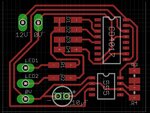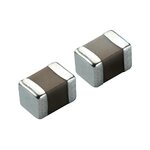Hest
Junior Member level 1
As a new pcb designer, I'm not totally sure that what I do will always work. I have made a couple of boards and would like to have them made soon.
I have made my boards from schematics found on the net and I would like if someone could check this one for me and tell me if it's correct or not.
My board is a "police flasher" with a NE555 and a CD4017 and it should go like this O = flash, _ = off:
O_O_O_O_restart
One thing I'm not sure about, when doing the reset on the CD4017, will it immediately go to OUT#0 or will it have an empty "tick" before it starts again?
Here is the board and the schematic I used for designing it. Would this work and do you have any tips on how to test a design like this?


I have made my boards from schematics found on the net and I would like if someone could check this one for me and tell me if it's correct or not.
My board is a "police flasher" with a NE555 and a CD4017 and it should go like this O = flash, _ = off:
O_O_O_O_restart
One thing I'm not sure about, when doing the reset on the CD4017, will it immediately go to OUT#0 or will it have an empty "tick" before it starts again?
Here is the board and the schematic I used for designing it. Would this work and do you have any tips on how to test a design like this?


